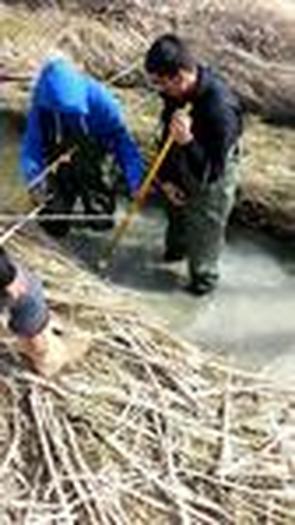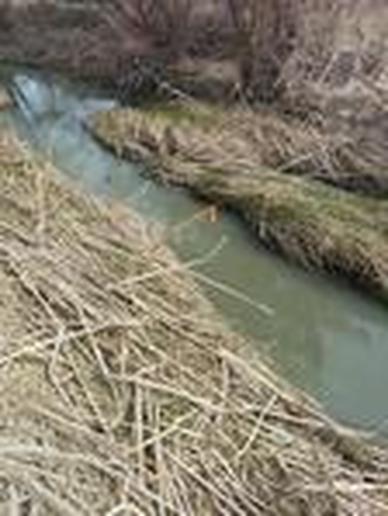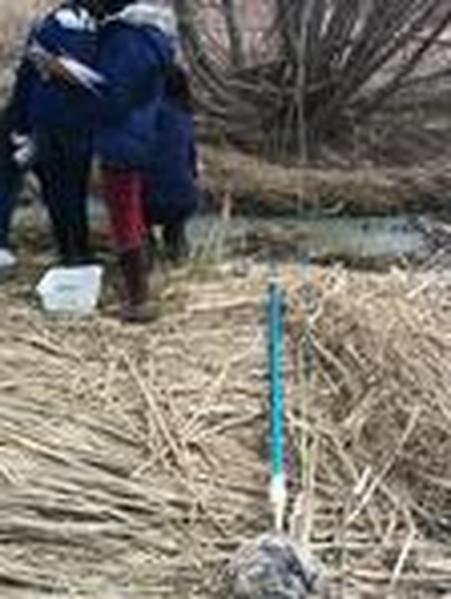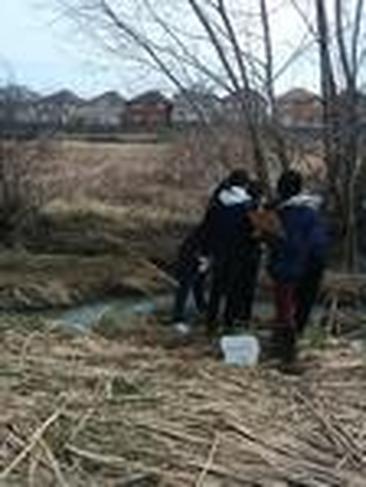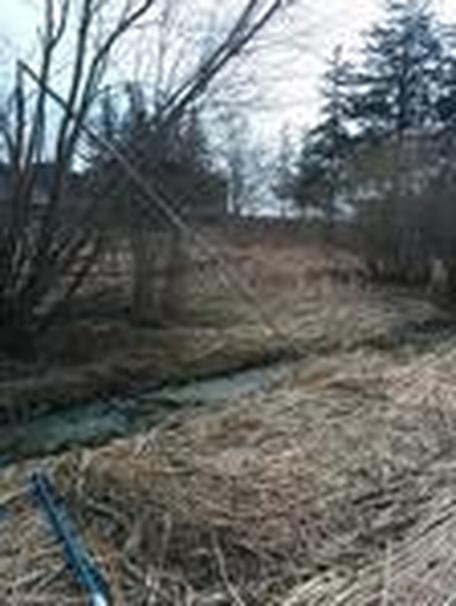-
What we did/How we did it
- Deciding a stream study location
- Detect
the riffles and pools
- Within
40m upstream, from a downstream crossover, detect the riffles and pools
- Mark
the transects
- Measure
the narrowest width of the stream because the number of transects relies
on how wide the stream is.
- Reminder* Make sure
there is 10m between every transect!
- Collecting samples
- Collect a sample from each transect
- Using the “traveling kick method”,
collect a sample from each transect
- Reminder* Make sure you work your way
through both sides of the bank.
- Carefully bring the net out of the water,
face first.
- Empty your D-net.
- Carefully empty your d-net
into your sieve, over the waste bucket.
- Use the squirt bottle to rinse any leftover
bugs and dirt into the sieve
- Remove any large excess materials from
the sieve
- Reminder* Rinse your D-net before
returning it to the stream.
- Transport items in sieve to the sample
bucket, using the squirt bottle to make sure you get all the bugs.
- Sampling and Sorting
- Take a small sample of the stream
contents and place it in the sorting tray
- Examine sorting tray and remove any
organisms or pick out anything with movement
- Pointer* Use Pipette for small bugs, and
tweezers for big bugs
- Transfer bugs into ice-cube tray while
organizing them into groups
- Examine and identify the bugs
- Record examinations on data sheet
Definition bar:
Crossover: A point in the stream where the current travels parallel with the
banks
Traveling kick method:
- Two people will enter the transect,
downstream.
- One person holds the D-net upstream.
- Then, put the D-net on the bottom of
the stream, while the other person will kick and rub their feet,
allowing water to flow into the net.
Materials you will need:
- Rain
boots
- D-net
- Waste
bucket
- Sample
bucket
- Sieve
- Squirt
bottle
- Sorting
tray
- Pipette
- Ice-
cube tray
Why
we did it/ Why it is important
The purpose of this study
was to determine if the local streams have been harmfully affected by
urbanization, and what future repercussion the stream and its organisms will
face. This study will also determine the pollution levels within the stream,
according to acidity levels, organisms, and further chemical testing. This
information will allow us to determine the overall health of the stream, and
inform us on the next steps to take in order to improve the overall health of
the stream. During this study, we came to the conclusion that the stream was
slightly polluted. Possible solution to repair the health of the stream would
include, taking necessary action to further prevent pollution, and cleaning up
the current pollution. These actions will allow for a healthy stream, and
healthy organisms within the stream.
-
What we did/How we did it
- Deciding a stream study location
- Detect the riffles and pools
- Within 40m upstream, from a downstream crossover, detect the riffles and pools
- Mark the transects
- Measure the narrowest width of the stream because the number of transects relies on how wide the stream is.
- Reminder* Make sure there is 10m between every transect!
- Collecting samples
- Collect a sample from each transect
- Using the “traveling kick method”, collect a sample from each transect
- Reminder* Make sure you work your way through both sides of the bank.
- Carefully bring the net out of the water, face first.
- Empty your D-net.
- Carefully empty your d-net into your sieve, over the waste bucket.
- Use the squirt bottle to rinse any leftover bugs and dirt into the sieve
- Remove any large excess materials from the sieve
- Reminder* Rinse your D-net before returning it to the stream.
- Transport items in sieve to the sample bucket, using the squirt bottle to make sure you get all the bugs.
- Sampling and Sorting
- Take a small sample of the stream contents and place it in the sorting tray
- Examine sorting tray and remove any organisms or pick out anything with movement
- Pointer* Use Pipette for small bugs, and tweezers for big bugs
- Transfer bugs into ice-cube tray while organizing them into groups
- Examine and identify the bugs
- Record examinations on data sheet
Crossover: A point in the stream where the current travels parallel with the banks
Traveling kick method:
- Two people will enter the transect, downstream.
- One person holds the D-net upstream.
- Then, put the D-net on the bottom of the stream, while the other person will kick and rub their feet, allowing water to flow into the net.
- Rain boots
- D-net
- Waste bucket
- Sample bucket
- Sieve
- Squirt bottle
- Sorting tray
- Pipette
- Ice- cube tray
Why we did it/ Why it is important
The purpose of this study was to determine if the local streams have been harmfully affected by urbanization, and what future repercussion the stream and its organisms will face. This study will also determine the pollution levels within the stream, according to acidity levels, organisms, and further chemical testing. This information will allow us to determine the overall health of the stream, and inform us on the next steps to take in order to improve the overall health of the stream. During this study, we came to the conclusion that the stream was slightly polluted. Possible solution to repair the health of the stream would include, taking necessary action to further prevent pollution, and cleaning up the current pollution. These actions will allow for a healthy stream, and healthy organisms within the stream.
-
What we did/How we did it
By: Harneet, Ashley & Roshni


